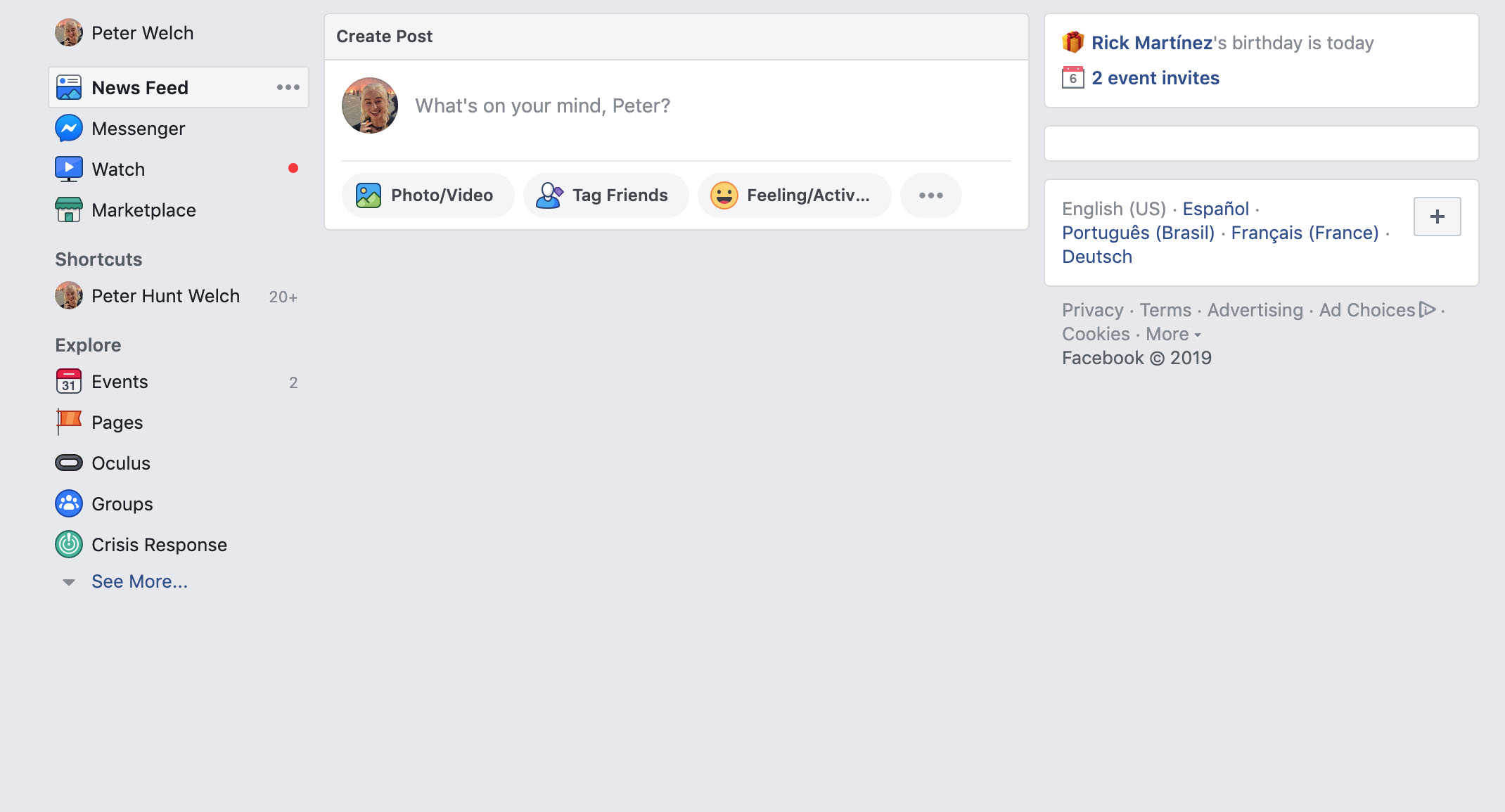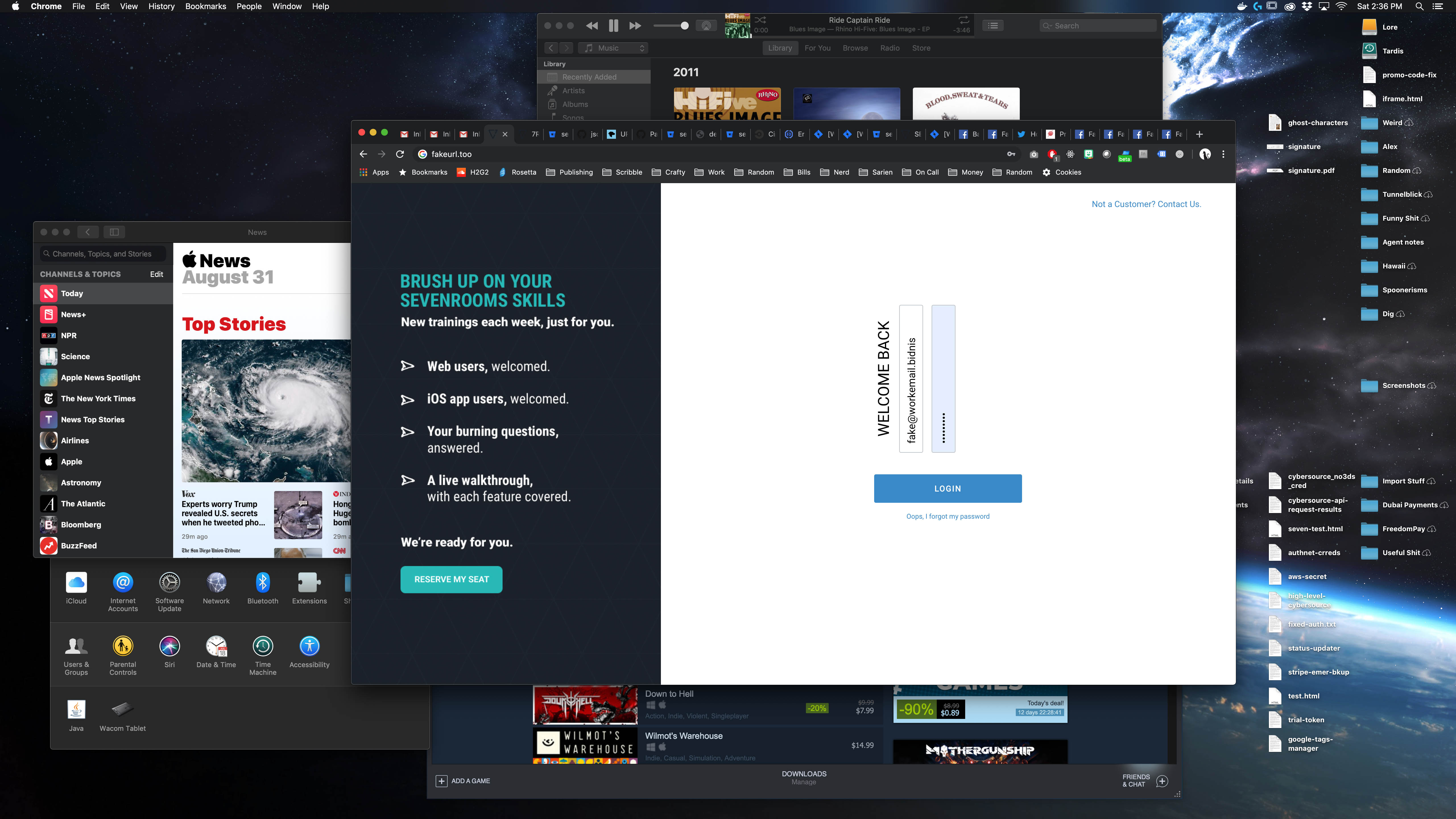In the post-nineties world, the screenshot has built an impenetrable fiefdom along the information trading routes between all sectors of business when one of them is in need of assistance. The screenshot is the holy grail of customer support, paradoxically both the first and last ditch attempts at being absolutely sure the recipient of the picture will understand the needs of the sender.
Future historians able to spin up the irradiated hard drives of our current era will display these screenshots in whatever they call PowerPoint presentations a thousand years from now, and if those future historians are human and teaching other humans, most of them will be asleep, and the remaining few will build modest incomes around interpreting nonsense because all screenshots are terrible.
I am extremely biased, but a picture is not worth a thousand words. A picture is worth a picture, often less. I was once emailed a screenshot of a white square, with the clarifying subject line “page borked.”

Fig. 1: A real human sent this to another real human.
I get it. We’re visual beings. Or that’s what people really want to be true based on the millions of times someone has said “I’m a visual thinker” to explain why they’re so bad at explaining things. Yet it is the eternal curse of subjective existence that a given mortal cannot be inside the brain of another, and it is the equally eternal curse of human existence that humans don’t get this because they’re visual thinkers and avoid philosophy classes. This educational blind spot leads Person Q to take a carefully framed picture of the 2 percent of their visual field that signaled a problem and email it to Person X, assuming Person X will immediately grok the necessary portion of Person Q’s life experience that motivated them to send it. In the sense that Person X will think, “Wtf is Q on?” and be on the way to an accurate diagnosis, this is a safe assumption, but not in the business way that so many screenshots are intended.
Consider Suzy. Suzy is bound and gagged in the basement of a serial killer, Fred. Fred is not a detail-oriented serial killer, so he neglects to relieve Suzy of her phone, since he didn’t expect her to regain consciousness anyway. Suzy, upon realizing she has her phone, loosens the ropes around her wrists just enough to slide the phone out of her pocket. She twists around, unlocks it with Face ID, twists back around, takes a picture of a dark ceiling, and sends it to her mom with the subject “SEE???” and Suzy’s body is never found.
No Suzy didn’t do this. Suzy is about to die, and people with the wherewithal to try not to die understand that they need to contact the right person and give them something to work with. In Suzy’s case, she would call the police and explain that Fred the serial killer has her locked in a basement. It’s okay to panic: this is not a relaxing situation. It’s okay to not know where the basement is: not much information is available. All that is required is to provide as much information as possible to as qualified a person as can be found, so they can trace a cell phone signal to a basement and send a SWAT team.1[1]
This is why you should enable Find My iPhone, but it’s also about providing context. The white square Allison2[2] sent me was indeed illustrative of a problem, and that was clear to her because she could see the rest of the page, which strongly suggested there should have been a list of credit card payments instead of the Zen koan shown in figure 1. For instance, say a product manager for Facebook opened their feed to something like this:

Fig. 2: Yes, that Rick Martínez.
That’s an acceptable screenshot. Anybody looking at it would know the feed was empty and that’s a problem. Actually, the end of the Facebook feed would be great, but, in context, bad for a product manager at Facebook. Whomever they send that to even knows what account to look at first, in this case, mine, because this particular manager is stalking me.
If a line is one pixel off, sending a tiny picture of that line and the line it’s supposed to match is not going to help anyone. Send a picture of the page and then at least the design person will know where it happened, which will help minimize blood loss as they navigate the needle mazes of CSS.
Then there are the well-meaning spirits who discovered the developer console and send these with worried emojis:

Fig. 3: 😬 😭 😲
In theory, a non-engineer sent this to a DevOps peer, who opened it and smacked his head, as if he had just seen instead another goddamn verse to Hallelujah, and solved the problem moments later. The laws of probability state that at least one unsolicited picture of a man’s genitals has resulted in a happy and prosperous marriage, but until all the examples are documented and explained by an assuredly groundbreaking new psychological theory, the educated among us know to open dialogues via alternative means, and the same goes for ‘sole pics. The scary red lines mean the ad blocker is working, and the yellow line is totally useless. Even if they were useful errors, sending an email that said “Check the console at /this/place” would be more useful than sending a screenshot of the console, because that’s exactly what the developer is going to do anyway, after they ask, “What’s the URL?”
Since screenshot addiction cannot be treated by modern medicine, I’ve been trying for years to get people to include the URL in their screenshots, because all the URLs in my company’s sprawling web application follow this format:
mycompany.com/the_product_they_use/who_they_are/where_they_are?what_they_are_doing
Seeing that URL saves at least one and usually three questions I have to ask after receiving 90 percent of the screenshots I get.3[3] Sure, we happen to have useful URLs, but in the fog of wartime web development, more is more when it comes to information. Take a look at this bad boy:

Fig. 4: Bad boy.
Spot them all: the URL, the problem, the browser, how many tabs are open on that browser, the fact that this person has an unusual number of Facebook tabs open and probably isn’t overly invested in their job, some other applications that are open, that they leave system credentials in text files on their desktop, the time, the operating system, that they have a serious investment in someone named Alex, and whether the wifi is connected. The wifi connectivity alone answers half of all queries sent to offsite developers, and the browser covers another 20 percent. This is a useful screenshot. This is a screenshot from Suzy. Be the Suzy that lived.





